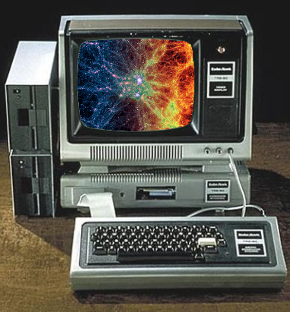Blip marks bang billions of years back
 On a casual night in the lab, an Australian PhD student has picked up a flash of radio waves from a few billion years ago.
On a casual night in the lab, an Australian PhD student has picked up a flash of radio waves from a few billion years ago.
Emily Petroff, a PhD student at the Swinburne University of Technology, was monitoring CSIRO's Parkes telescope when she spotted the burst, observing the cosmic phenomena in real time.
It is the first time anybody had actually seen it happen.
The fast cosmic radio burst was plotted to a position about 5.5 billion light years from Earth, meaning the event itself happened eons in the past.
No-one knows exactly what causes cosmic radio bursts, but the head of astrophysics at the CSIRO - Dr Simon Johnston – put forward some theories in an interview with the ABC.
“One of the front runners is a neutron star collapsing to form a black hole. And that's a very exciting possibility,” he said.
“If we can see that happening, it gives off a big flash of radio waves from the far distant universe, and that's really very exciting.
“We don't know what [the cause] is and so that's always interesting to find out... but the other interesting thing is how do the radio waves go from the source, which is maybe five billion light years away.
“How does it travel from there to our telescope?
“Knowing how it travels and what it goes through is also very exciting for the cosmologists, because we really don't know what the stuff is like in between the galaxies. This fast radio burst allows us to probe that,” he said.
Professor Bryan Gaensler, the director of the Dunlap Institute for Astronomy and Astrophysics at the University of Toronto, agreed.
“What's really exciting is the signal has travelled from one side of the universe to the other, and as it does so, it encodes information about all the matter in between us,” Professor Gaensler said.
“So what scientists would really like to do is take the whole universe and put it in a giant sack, and put it on a set of scales and weigh the universe.
“Obviously, that's not something that we can do practically, but by counting up the amount of stuff that these signals travel through - as they go from wherever they begin, to Earth - you can actually quite precisely weigh the universe.
“And that will answer some really profound questions about just what the universe is made of, how it began, and what most of the invisible gas out there actually is.”
On a related note, data from the Hubble Space Telescope has been used to compile the most detailed image ever seen of the Andromeda galaxy, one of our neighbours.








 Print
Print